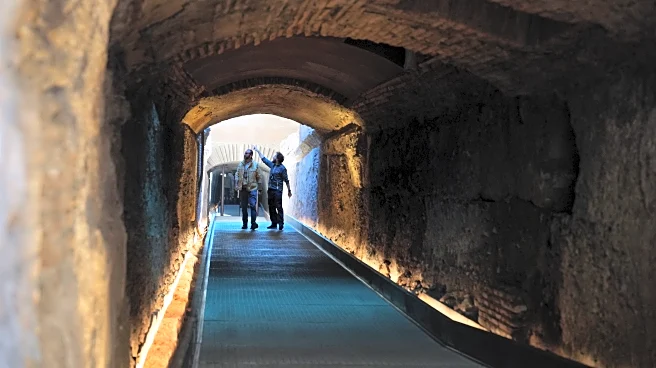What's Happening?
The Parthenon temple in Athens, Greece, is now free of scaffolding for the first time in decades, providing visitors with an unobstructed view of the historic site. The scaffolding, which was set up for conservation work about 20 years ago, has been removed from the western façade, the side offering the best street-level view. Culture Minister Lina Mendoni highlighted that this marks the first time in approximately 200 years that the Parthenon's exterior is completely free of scaffolding. However, conservation work will continue, with new scaffolding expected to be erected in about a month, designed to be lighter and more aesthetically aligned with the monument. The renewed conservation efforts are projected to last until early summer 2026, after which the Parthenon will be entirely free of scaffolding.
Why It's Important?
The removal of scaffolding from the Parthenon is significant for both cultural heritage and tourism. As Greece's most popular tourist site, the Acropolis attracts millions of visitors annually, and the unobstructed view enhances the visitor experience, potentially boosting tourism revenue. The conservation efforts ensure the preservation of this UNESCO World Heritage site, maintaining its historical and architectural integrity. The temporary removal of scaffolding also reflects ongoing commitments to cultural preservation, balancing the need for restoration with public access. This development underscores the importance of maintaining historical sites while accommodating modern tourism demands.
What's Next?
The next phase of conservation work will involve the installation of new scaffolding, which is expected to be less intrusive and more in harmony with the monument's aesthetics. This phase is scheduled to last until early summer 2026, after which the Parthenon will be completely free of scaffolding. The ongoing restoration efforts will likely continue to attract international attention, with potential implications for future conservation projects at other historical sites. Stakeholders, including cultural heritage organizations and tourism operators, will be monitoring the impact of these changes on visitor numbers and satisfaction.











